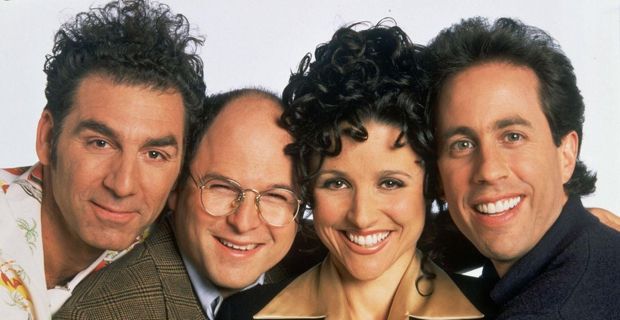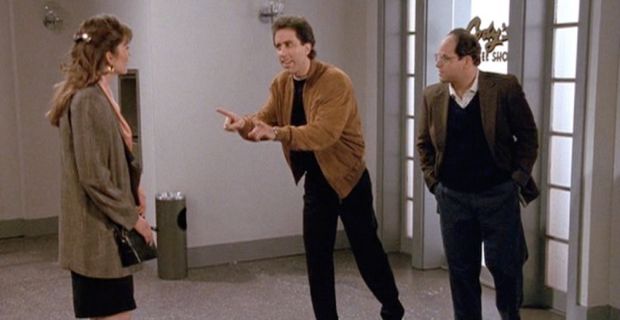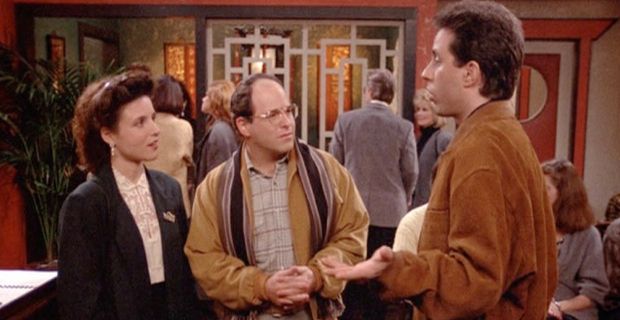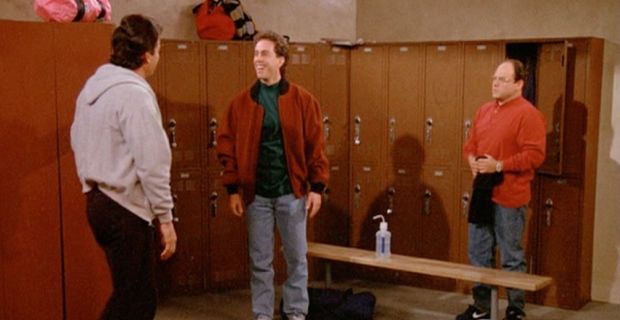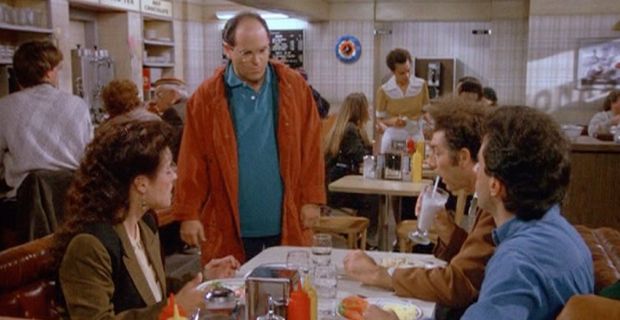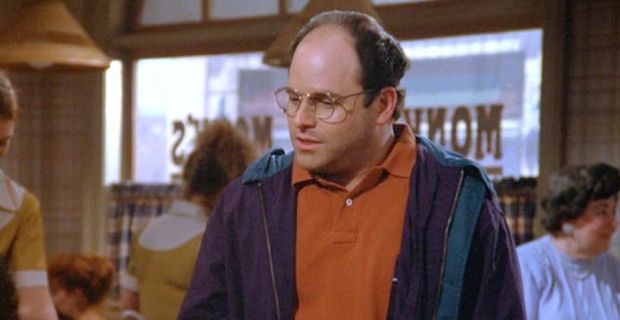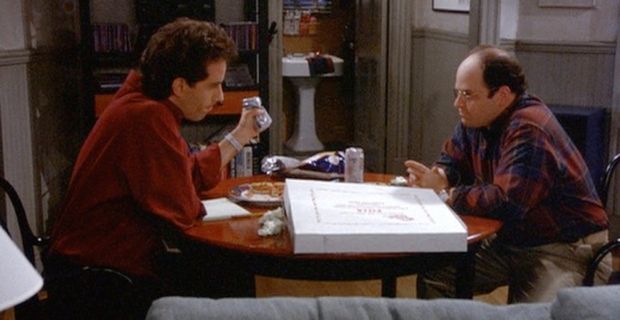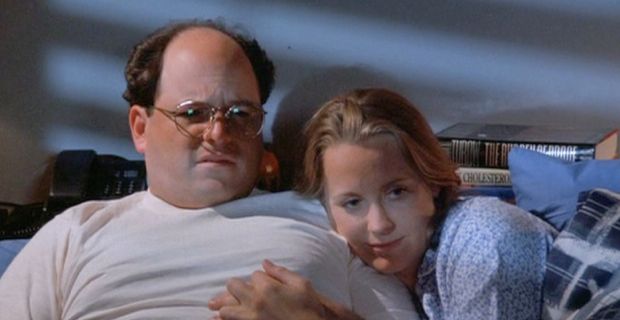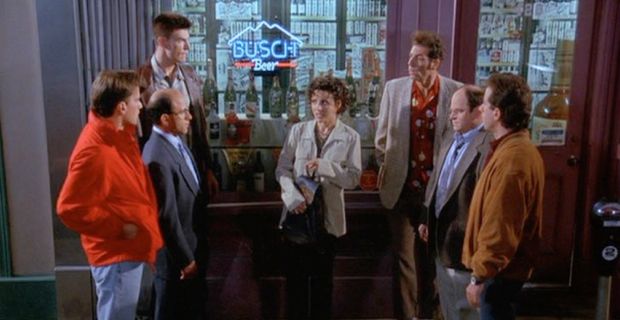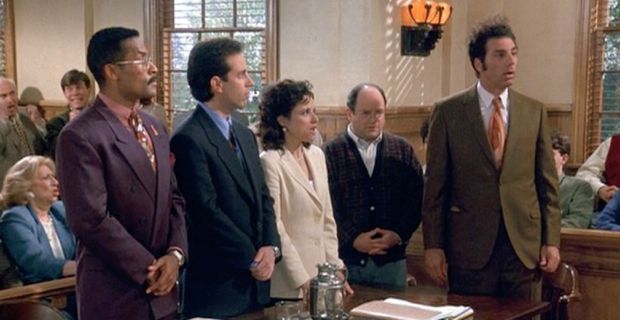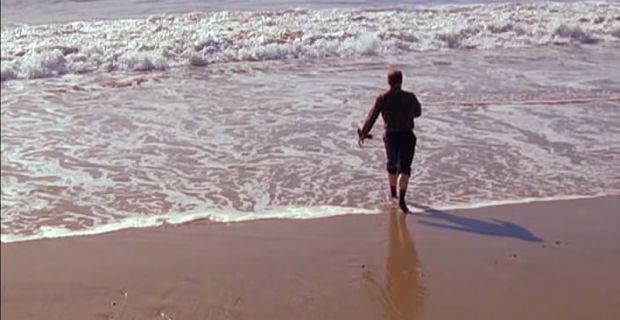Celebrating its 25th anniversary this past summer, Seinfeld remains a force in pop-culture, even though a new episode hasn’t aired since 1998. Thanks to it revolutionizing the network sitcom (inspiring countless imitators), and its constant presence on syndication (earning it new generations of fans), the “show about nothing” is widely regarded as one of the greatest and most popular TV shows ever created. It has a lasting legacy that’ll be hard to replicate.
One of Seinfeld's more enduring additions to the lexicon is that of Festivus, the alternative holiday created by Frank Costanza (Jerry Stiller) as a means of protesting the commercial nature of Christmas. A perfect example of the program’s unique sense of humor and creativity, Festivus has become a staple of modern society and is celebrated by Seinfeld fans from all over.
With December 23rd marking the occasion (and as a way to honor the show’s milestone anniversary), we figured now would be a better time than ever to list some of the best episodes Jerry Seinfeld, Larry David, and their team had to offer. If you’re a newcomer to their New York, this is a great place to start; longtime followers can also relive the moments of these classic memories.
NOTE: As a way of illustrating the strength of Seinfeld’s entire run on NBC, we are singling out one episode from each of the nine seasons (with an honorable mentions list to follow).
-
Season 1: "The Stake Out"
It’s hard to believe now, but when Seinfeld first went on the air, NBC gave it a confidence-boosting order of a four-episode first season (not including the pilot episode). As such, the pickings are rather slim here, but some seeds that would go on to define the series were planted in the third episode, titled “The Stake Out.”
In it, Jerry attempts to get a date with a woman lawyer he met at a party while out with Elaine (Julia Louis-Dreyfus), and since Jerry and Elaine recently broke up, the comedian feels uncomfortable asking his friend for the woman’s number. He decides the best way to get in contact with her is to stake out her place of work with George (Jason Alexander), and make a move from there.
This was the first real meaty Elaine story (following her brief cameo in “Male Un-bonding”) and provided the first hints of romantic tension between her and Jerry that would be explored in later episodes. Also, many of Seinfeld’s running gags (Art Vandelay, George’s love of architecture, etc.) were introduced in a sequence where Jerry and George scheme an excuse for the two of them being at the law office, so in essence, “The Stakeout” acts as an origins tale of what’s to come down the line.
-
Season 2: "The Chinese Restaurant"
Taking the slogan “a show about nothing” to the extreme, this episode sees Jerry, George, and Elaine simply waiting for a table at a Chinese restaurant before seeing Plan 9 from Outer Space. The whole thing plays out in real-time, with the three characters doing nothing but sitting in the lobby as they hope something will free up before their show.
It was quite groundbreaking at the time, and it showed how the writers could take the minutiae of everyday life and turn it into something special. Despite its single-location nature, “The Chinese Restaurant” wasn’t short on laughs, as George pondered the rules of how long a pay phone call should be, Jerry struggled to remember the name of someone he’s met, and Elaine got hungrier and more impatient. It was strikingly relatable and provided a template that many other episodes (like “The Subway” and “The Parking Garage”) would follow.
-
Season 3: "The Boyfriend"
Casual fans probably know this as the “Keith Hernandez episode,” where the former New York Mets great made a memorable guest-appearance as a potential new friend for Jerry. Exploring the oddity of starting a relationship with a new companion in adulthood and the nature of celebrity fandom, the writers made great use of Jerry’s love for the Mets – as he obsessed over Hernandez like he was a dating prospect and not just a guy.
But the hour-long block had much more to offer than a Jerry-Hernandez-Elaine love triangle. George, who was well into his prolonged unemployment period, has one of his finest moments as he attempts to fake a job interview with Vandelay Industries (with a terrific ad-lib by Jerry to cap it off). Meanwhile, Kramer (Michael Richards) and Newman (Wayne Knight) star in their parody of Oliver Stone’s JFK, accusing the Mets first baseman of hitting them with a “magic loogie,” which is a sequence for the ages.
-
Season 4: "The Contest"
Ask someone on the street to name a Seinfeld episode, and most people will probably give you this one. Arguably its most iconic, “The Contest” won an Emmy for Best Writing, thanks to its sublime handling of a taboo topic that led to hilarious results – which included not actually coming out and saying what that was. It's arguably the show's most extreme example of pushing the envelope for what's appropriate on network TV.
Giving each character their own obstacle to winning the contest, the episode had everything from the temptation of John F. Kennedy, Jr. (launching another series staple), Kramer’s most famous entrance, sponge baths, and George Costanza tossing a box of Tic-Tacs on his mother’s hospital bed. And it all tied together when the multiple storylines dovetailed, creating a hysterical climax that showcased one of the show’s greatest strengths – taking unrelated narratives and connecting them in unexpected and amusing ways.
NEXT: The Top 5...
-
-
Season 5: "The Opposite"
As scary as this might be to hear, there’s a little bit of George in all of us. That’s what makes him such an interesting character and it’s part of what makes “The Opposite” such a satisfying bit of comedy. Finally taking his advice from “The Seinfeld Chronicles,” George decides to do the opposite of his usual actions and his life changes for the better.
The episode was so profound that it inspired viewers to adapt the philosophy in their own lives. Based on George’s results, it would be hard to doing the opposite of your impulses, as the loveable (?) loser picked up a beautiful woman at the coffee shop, got a job with the New York Yankees, and moved out of his parents’ house. It was also here we met the fictionalized version of former Yankee owner George Steinbrenner, who would go on to become a memorable side character as George’s boss.
-
Season 6: "The Switch"
It may not be as iconic as other entries on our list, but “The Switch,” as usual for a Seinfeld episode, delivered the laughs in spades. The core story involved Jerry and George plotting a way for Jerry to switch girlfriends from his current one to her roommate (who has a better sense of humor), which involved a memorable scheming sequence, a hilarious backfiring (“She’s into it!) that just made the whole situation worse., and one of Jason Alexander’s finest one-liners.
Par for the course, the so-called “B” stories gave us a lot to chew on too. Elaine’s simple quest to reclaim her boss’ tennis racket became an interminable scenario that may have cost her a better job and George’s subplot of finding out if his girlfriend is bulimic was relatable and despicable at the same time. Plus, here the mystery of Kramer’s first name (Cosmo) is solved, allowing audiences to pull back a layer on the mysterious next-door neighbor.
-
Season 7: "The Engagement"
Larry David’s final full year gave us the Soup Nazi, a trek for contraceptive sponges, and the worlds theory (“You are killing Independent George!”), but Seinfeld’s seventh season was noteworthy for its year-long arc that involved George getting engaged to his former girlfriend Susan Ross (Heidi Swedberg) and facing the prospect of marriage. Seinfeld always maintained a motto of “no hugging, no learning,” but in this episode the writers tried to develop the characters and push them down a new path.
Of course, they put their own spin on the concept of an arc, as George quickly reverted back to his old, miserable self after finally getting what he wants. Meanwhile, Elaine became more interesting as her jealousy of George’s engagement became a running theme through the first handful of episodes and gave Louis-Dreyfus substantial material to explore. This episode also features Kramer’s advice on marriage, which is a perfect illustration of how the main characters are wretched individuals, while also appealing to our basic instincts of self-preservation.
-
Season 8: "The Bizarro Jerry"
Arguably starting with the “show within a show” storyline that ran through Season 4, Seinfeld began to stray away from the grounded and towards the fantastical as time went on. Seinfeld (the person) says that was perhaps for the better, since it gave the series a second wind thanks to the creativity and opportunities it presented.
Writer David Mandel went full-on Twilight Zone with this episode, which saw Elaine befriend the mirror images of her longtime companions. Again exploring with character development, Elaine tried to evolve as a person before realizing that she was too flawed to be saved. In a way, it plays almost as a tragicomedy in that sense.
But the episode was packed with much more than Kevin, Gene and Feldman. George gets permission to enter the “forbidden city” of supermodel nightclubs and Kramer accidentally stumbles into a job, leaving Jerry lonely without his “trusted” circle of friends. For all the insults the group threw at each other; for all the times they wished they could just get away, “The Bizarro Jerry” illustrated how dependent the four were on one another and made a statement that once you’ve reached a certain point, you are who you are and there’s no changing that.
-
Season 9: "The Finale"
Continuity isn’t exactly a strongpoint of many sitcoms (Google “Chuck Cunningham Syndrome” for further details), but Larry David set out to change that. Seinfeld’s co-creator made sure his characters had a history and the things they did carried over during the nine years the show was on the air. Whether it was something large like George’s three season stint on the unemployment list or minor references to earlier episodes, the characters felt like real people because of this tactic. That’s just one of the reasons why the controversial “Finale” is so noteworthy.
The episode marked the return of David as a writer, with he and Seinfeld ending what they started on their own terms. With their quirky tastes in humor, the duo decided to run with a narrative that saw the four main characters go on trial and thrown in jail, which was a gutsy move and honestly stayed true to the nature of the program. David, and by extension, the full writing staff, was never in the mind to please the masses with happy tales and heartfelt endings. Jerry, George, Kramer, and Elaine were mostly cold and emotionless, so their sendoff was rather fitting.
“The Finale” also took the concept of a “show about nothing” and turned it on its head. By bringing back so many secondary characters from the seasons prior, it became apparent that everything the core four did – from stealing marble ryes to buying toxic envelopes to fighting bubble boys – was leading up to something. The episode turned all of Seinfeld into a morality play about karma. In addition, it was a showcase for the series’ attention to detail that defined it and helped it stand out from the crowd.
-
Honorable Mentions
There are too many great episodes of Seinfeld to choose from, so by no means is this list meant to be all-inclusive. Below is a list of a few honorable mentions. Be sure to share your favorites in the comments below.
- “The Betrayal”: The “backwards narrative” idea was groundbreaking and showed the writers’ passion and energy for crafting original and exciting blocks of comedy.
- “The Outing”: GLAAD award-winner that gave us the phrase “not that there’s anything wrong with that.”
- “The Marine Biologist”: George saving a beached whale from a golf ball showed that they could and would do anything – and make it work. (pictured)
- “The Yada Yada”: With Bryan Cranston on fire, the episode hilariously explored political (religious?) correctness, gave Jerry a set piece in the Catholic church, and added such a succinct phrase to the lexicon.
- “The Busboy”: If you want to see where Seinfeld’s trademark dovetailing of unrelated stories began, see the encounter between Elaine’s boyfriend and a restaurant busboy.
- “The Pitch”: Part of the only season that won Seinfeld Best Comedy at the Emmys, the meta-nature of the Jerry show gave us a hilarious look inside NBC and showed the creators weren’t afraid to make fun of themselves.
Follow Chris on Twitter @ChrisAgar90.

